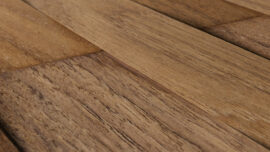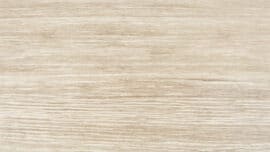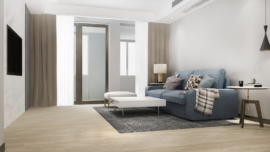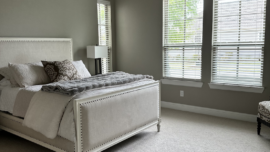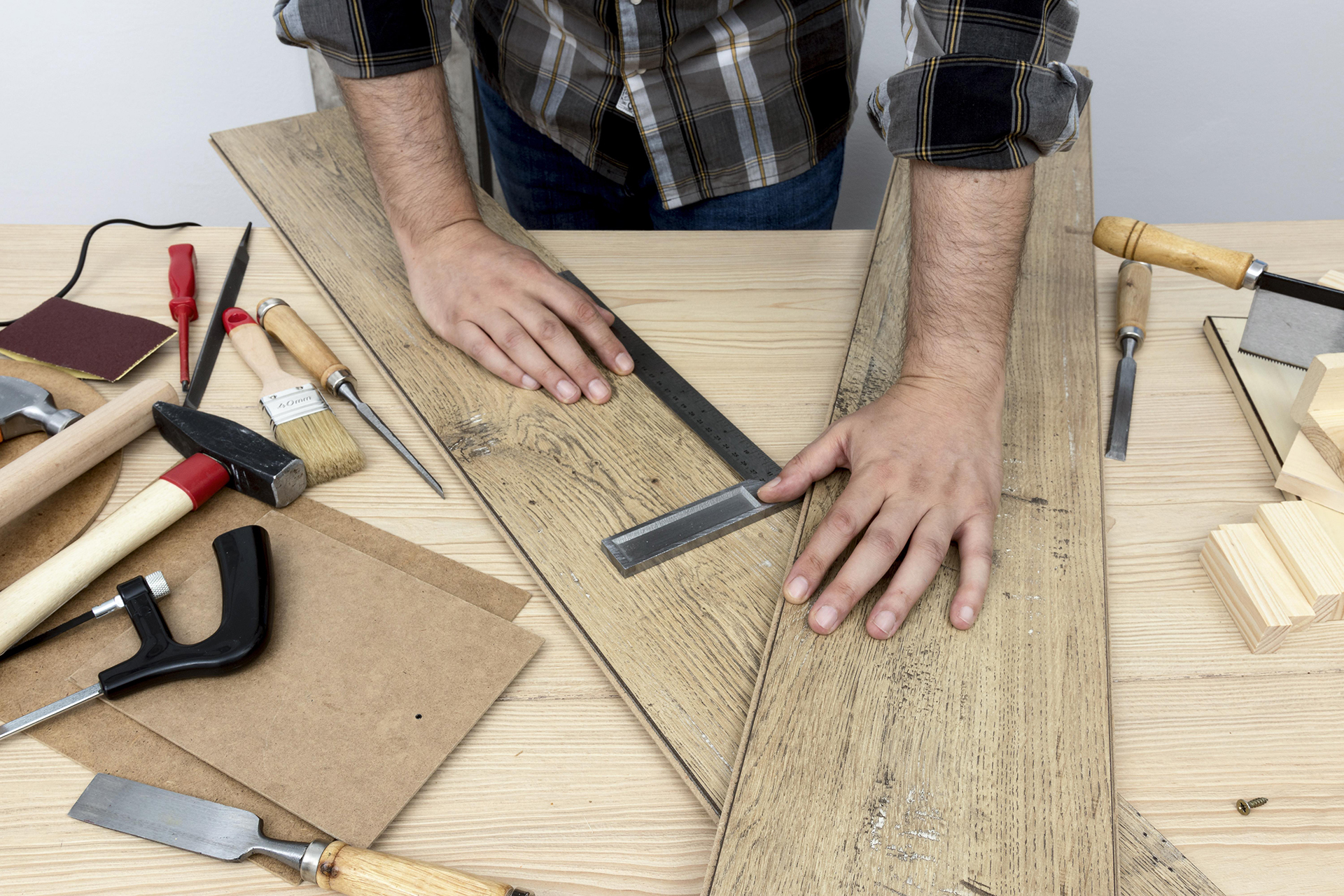
How Is Engineered Wood Flooring Made? [+ Benefits & Style Features]
Engineered wood flooring is a type of flooring that combines the aesthetic appeal of natural hardwood with the enhanced stability and durability of man-made materials. It is designed to replicate the look and feel of traditional solid wood flooring while offering several practical advantages, making it a popular choice for both residential and commercial spaces.
But how is it constructed? In this blog, we’ll walk you through how it’s made as well as some of the benefits and style features of engineered wood flooring.
How Is Engineered Wood Flooring Made?
The manufacturing process involves multiple steps that combine different layers of materials to create a strong and stable flooring product. These include the selection of material, preparing the veneer, manufacturing the core and backing layers, bonding the layers, pressing, cutting and profiling, finishing, and quality control.
-
Selection of material
The first step in the production process involves selecting the materials to be used. Typically, engineered wood flooring consists of three layers: a top layer of hardwood veneer, a core layer made of high-density fiberboard (HDF) or plywood, and a bottom layer, also known as the backing layer, which is often made of the same material as the core.
-
Preparing the veneer
The top layer, or veneer, is made from real hardwood, which is carefully selected based on color, grain pattern, and overall appearance. The logs are cut into thin slices using a rotary lathe or a slicing machine. These slices are then dried, either through air-drying or kiln-drying, to remove excess moisture and prevent warping or cupping.
-
Manufacturing the core and backing layers
The core layer is produced by compressing wood fibers or particles with adhesives to create a dense, stable material. For HDF, wood fibers are mixed with resin and then compressed under high heat and pressure. Plywood, on the other hand, is made by gluing together multiple layers of wood veneer, with each layer’s grain running perpendicular to the adjacent layers. This cross-grain arrangement adds stability and strength. The backing layer is made in a similar fashion but may be thinner and use a lower-grade material.
-
Bonding the layers
The three layers are bonded together using strong adhesives, usually urea-formaldehyde or melamine resin. The top hardwood veneer is adhered to the core, and the backing layer is attached to the bottom of the core. This creates a sandwich-like structure with the core as the filling.
-
Pressing
The bonded layers are pressed together using a hot press, which applies heat and pressure to ensure a strong bond between the layers. This process also helps to even out any slight irregularities and achieve a consistent thickness across the entire flooring plank.
-
Cutting and profiling
Once the pressed layers have cooled and set, the large panels are cut into individual planks using a precision saw. The edges of the planks are then profiled, either with a tongue-and-groove or a click-lock system, to allow for easy installation and a secure fit.
-
Finishing
The top veneer surface is sanded smooth and then finished with a protective coating, such as polyurethane, oil, or wax. This not only enhances the wood’s natural beauty but also protects it from wear, scratches, and moisture.
-
Quality control and packaging
The finished engineered wood flooring planks undergo rigorous quality control checks to ensure they meet industry standards and are free from defects. They are then carefully packaged and prepared for shipping to distributors, retailers, and eventually, consumers.
Benefits Of Engineered Wood Flooring
Some key benefits of engineered wood flooring include:
- Stability: Due to its multi-layered structure, engineered wood flooring is less susceptible to warping, cupping, or expanding and contracting in response to changes in temperature and humidity compared to solid wood flooring.
- Versatility: Engineered wood flooring can be installed over a variety of subfloors, including concrete, plywood, or even existing flooring, making it suitable for various applications.
- Easy installation: The planks are typically designed with tongue-and-groove or click-lock systems, which make installation easier and faster compared to traditional solid wood flooring.
- Cost-effectiveness: While engineered wood flooring may still be more expensive than other flooring options like laminate or vinyl, it is generally more affordable than solid wood flooring, offering a similar look at a lower price point.
- Compatibility with underfloor heating: Engineered wood flooring can be used with underfloor heating systems, unlike some types of solid wood, which may be prone to warping or damage from heat.
Types And Styles When Selecting Engineered Wood Flooring
Engineered wood flooring comes in a wide range of styles, allowing homeowners and designers to achieve various looks that suit their preferences and interior design themes. Some of the style variations that engineered wood flooring is available in include:
- Wood species: Engineered wood flooring is available in a variety of wood species, such as oak, maple, hickory, walnut, cherry, and exotic woods like acacia and teak. Each species has its unique grain patterns, colors, and characteristics.
- Plank widths: Engineered wood flooring comes in various plank widths, from narrow planks around 2-3 inches wide to wide planks over 7 inches wide. The choice of plank width can significantly impact the overall appearance of the floor and the room’s visual proportions.
- Plank lengths: Engineered wood flooring planks come in different lengths, with some manufacturers offering random-length planks for a more authentic and natural look.
- Surface textures: Engineered wood flooring is available with different surface textures, such as smooth, hand-scraped, wire-brushed, or distressed. These textures can add visual interest to the floor and create a specific aesthetic, from sleek and modern to rustic and antique.
- Finishes: The top veneer layer of engineered wood flooring can be treated with various finishes, including matte, satin, semi-gloss, or high-gloss. The finish affects the floor’s sheen and can influence the overall look and feel of the room.
- Colors and tones: Engineered wood flooring comes in a wide range of colors and tones, from natural, light, and medium shades to dark and even gray or whitewashed finishes. This variety allows you to find the perfect color to match your interior design.
- Installation patterns: Engineered wood flooring can be installed in various patterns, such as straight, diagonal, herringbone, chevron, or parquet designs. These patterns can create a unique visual effect and enhance the room’s overall appearance.
With such a diverse range of styles, engineered wood flooring offers plenty of options to suit different tastes and design preferences, making it a popular choice for residential and commercial spaces alike.
By combining the aesthetic appeal of hardwood with the stability and durability of engineered materials, engineered wood flooring offers an attractive and practical flooring solution for various residential and commercial applications. Want to learn more about engineered wood flooring or get an estimate for your flooring project? See what we have available here and contact us today!
Engineered Wood Flooring FAQs And Recap
What is manufactured wood? Is it different from engineered wood?
Manufactured wood is the same as engineered wood. Manufactured wood is a type of material made by combining wood fibers, particles, or veneers with adhesives and other additives to create a range of products that mimic the appearance and properties of solid wood. These products are more affordable, environmentally friendly, and stable compared to solid wood, making them a popular choice for various applications such as flooring.
What is the thickness of engineered hardwood?
The thickness of engineered hardwood flooring can vary depending on the product and manufacturer. Generally, engineered hardwood is available in thicknesses ranging from 3/8 inch (approximately 9.5 mm) to 3/4 inch (approximately 19 mm). The thickness of the flooring is determined by the combination of the top hardwood veneer layer, the core layer (usually made of high-density fiberboard or plywood), and the bottom backing layer.
What is the flooring structure of engineered wood?
As previously mentioned, the flooring structure of engineered wood consists of multiple layers that are bonded together to create a stable, durable, and visually appealing flooring product.
The engineered wood flooring structure generally consists of three main layers:
Top layer (veneer): The top layer is a thin slice of real hardwood, which gives the engineered wood flooring its natural appearance and texture. The veneer is available in a variety of wood species, colors, and finishes, allowing for a wide range of design options. The thickness of the veneer can vary, but it typically ranges from 0.6 mm to 4 mm. Thicker veneers can be sanded and refinished more times than thinner ones, extending the lifespan of the flooring.
Core layer: The core layer is the middle layer and provides structural stability to the flooring. It is usually made from high-density fiberboard (HDF) or plywood. The core layer helps to prevent issues like warping, cupping, or expansion and contraction due to changes in temperature and humidity, which can affect solid wood floors. This layer also contributes to the overall thickness and durability of the engineered wood flooring.
Bottom layer (backing): The bottom layer, often made from the same material as the core, provides additional stability and support to the flooring. This layer helps to keep the flooring balanced and flat, further preventing warping or distortion.
These layers are bonded together using strong adhesives and pressed to create a stable and robust flooring product. The multi-layered structure of engineered wood flooring is what sets it apart from solid wood flooring, offering enhanced stability, resistance to moisture and temperature changes, and versatility in installation methods.


